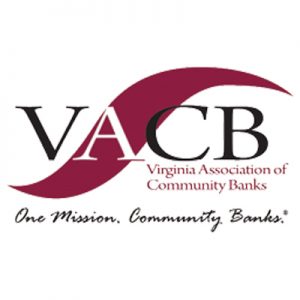The U.S. has undergone tremendous economic changes for more than 40 years. Those changes affect the middle class, and they also affect community banks. As income inequality has grown over the last 30–40 years, legislative changes have encouraged bank consolidation, and the number of community banks has decreased. According to an article by J.C. McKissen on the Inc. website, larger national banks either purchased these banks or merged with them. The article points out that the decrease in banks has made it harder for entrepreneurs to get the money they need. These budding entrepreneurs often depend on banks to smooth the inevitable bumps of growing a business while maintaining enough liquidity to pay the bills when they come due. The same is probably true for other customers, especially those in smaller communities.
In September 2011, the U.S. had 7,436 banks. In September 2021, the number was 4,914 banks.
There are more statistics. According to the samco-amc.com website, 1984 was a turning point. More than 10,000 community banks failed, merged or have been acquired since then. Most of those that remain have assets under $100 million. The banks that acquire them are usually about four times larger than the banks being acquired.
Why are community banks going away? In one word: legislation.
According to Oscar Perry Abello, in May 2020 on the nextcity.org website, there were 13,000-14,000 U.S. banks between the 1930s and the 1980s, but most were very small. In 1988, more than 12,000 banks had assets of as much as $300 million. Only 3,000 banks could say the same in 2020, but there were five times as many banks with $20 billion or more in assets.
The problems started with deregulation in the 1980s. By 1990, 46 states made it easier for banks to operate across state lines. In 1994, President Clinton signed the Riegle-Neal Interstate Banking and Branching Efficiency Act. The act removed federal restrictions on banking across state lines. In 1999, the Gramm-Leach-Bliley Act repealed the Glass-Steagall act that had separated commercial banking from investment banking, and big banks began merging with investment banks.
The Great Recession motivated lawmakers to create additional rules. The Dodd-Frank Wall Street Reform and Consumer Protection Act are examples. Compliance has favored large banks because community bankers don’t have the same resources as their peers at larger banks. The new rules caused any bank with less than $50 million to become unprofitable.
Banks can be a powerful tool within communities. However, big banks and community banks have different roles. The biggest companies can absorb adverse circumstances; smaller companies sometimes can’t.
Computerized banking has made branch banking and interstate banking possible, but it has also created competition between bankers that didn’t exist before. For example, suppose you have two banks in adjacent counties owned by two friends. The two friends are probably close enough physically to have lunch occasionally, and if they have a different set of customers, there’s no conflict of interest. But now, suppose that one or both open a new branch in the other banker’s county. If they get together for lunch, they can’t talk about banking anymore because they are competitors as well as friends.
Out-of-state ownership creates a similar scenario. Different regions in the U.S. have different risks. A small banker can diversify by trading risks with bankers in other geographical areas, but big banks can handle the problem by buying risk instead of trading it.
It makes sense for an effective banking system to provide resources for as many people as possible. What doesn’t make sense is directing all the help to the top instead of the bottom.
Even though the internet has made it easy for people to bank online, that doesn’t mean internet banking always meets customer needs. In particular, small towns with community banks thrive; small towns without them don’t. There is no substitute for a face-to-face business relationship with someone who decides to help you because they know you, not because a computer algorithm identified you as a safe bet.
People at big banks understand the importance of the community bank system, but preserving it is another matter. Where community banks focus on relationships, big banks focus on transactions that use credit scores and models. Since it costs as much to write a big loan as a small one, and big loans generate more interest, big banks focus on the big loans. They also focus more on income from fees and investments than interest from loans.
Another problem is that big banks can centralize their operations far away from their customers. Although a big bank can focus on relationships, that’s a hard focus to maintain from a distance. It’s easy to forget about serving people you’ve never met. Also, banking systems must grow to survive and maintain economies of scale. When an interstate bank decides to expand, they don’t buy branches that belong to big banks. Instead, they buy the local community bank even though they know it’s needed. An abstract need to support community banks is not as important to them as the immediate need to please a boss by helping an already large banking system grow even larger.
In contrast, it’s much easier for a community bank to pay attention to relationships because the people who work there are often personally invested in their community. They might have another business or a farm to run on the side. They often know their customers personally. Many of their decisions are made to benefit the entire community. Also, they often counsel potential customers about what to do to achieve their goals.
When COVID-19 came along, the entire country shut down. Community banks stepped up to the challenge of helping customers. Even though the network of community banks was smaller than it had been decades earlier, it was still large enough to help with the rollout of government money through the Paycheck Protection Program (PPP). Small lenders outperformed large lenders in round one; 60% of PPP loans came from lenders with less than $1 billion in assets. (Big lenders caught up in round two.) But that help came at a price: a negative effect on liquidity. Community banks ended up with a lot of money that wasn’t earning interest. Lower net interest margins mean reduced net earnings. In turn, the banks ended up with less money than they would have had otherwise to support their communities.
The fact that banks were hurt for helping out their communities was certainly not intentional. Everyone was scrambling at the time. Nevertheless, it’s important to make sure community banks do a better job from now on as they advocate for themselves.
What happens when the network of community banks across the country becomes too small to be effective? People will leave rural America for big cities because they won’t have enough reason to stay where they are. If we don’t want that to happen, it is time to start working to protect the community banks that are still here.
Maybe it’s time to study what North Dakota has done relative to community banks. The Bank of North Dakota supports community lenders in a way that happens nowhere else. As a result, North Dakota led the nation by having a higher market share of deposits and PPP loans relative to population size than any other state. North Dakota has protected its community banks, and when the pandemic came along, those banks responded more effectively than other states with fewer community banks.
What can community bankers do to safeguard their banks?
It used to be that bankers passed their banks on to their families. When bankers struggle to stay in business, their children move into other businesses. That is why Job No. 1 has to be returning community banks to profitability. Community bankers can also help themselves by using important strategies such as succession planning. That way, when the day comes to hand off control of a bank to someone else, the bank can be transferred to a new owner with the same priorities and motives as the previous owner.
Bankers can also help each other survive by joining associations and participating in programs that allow them to work more effectively. As a group, bankers can also lobby on a government level to protect their interests. For example, big banks should split off the investment side of their businesses. Federal and state governments could cap the market share size of deposits that banks can have in states. The government could focus on reducing regulatory complexity and applying the same rules to any organization that starts acting like a bank. “Shadow banks” operate like banks but don’t play by the same rules, even though their assets are substantially larger than the banking industry’s assets ($52 trillion versus $17 trillion). That’s not fair.
Capping deposits would give customers in states like New York and California more choices; according to Abello, JP Morgan Chase had a 32% market share in New York. Three banks in California (Bank of America, Wells Fargo and JPMorgan Chase) had a 50% market share. No other banks had anything comparable.
Finally, another change that would help community banks is making it easier for communities to start new banks. The FDIC approves new banks, but the number of new banks has been small or nonexistent every year since 2010.
Legislation has harmed community banks. It’s time to change the playing field by pooling resources within the industry and advocating with lawmakers.








